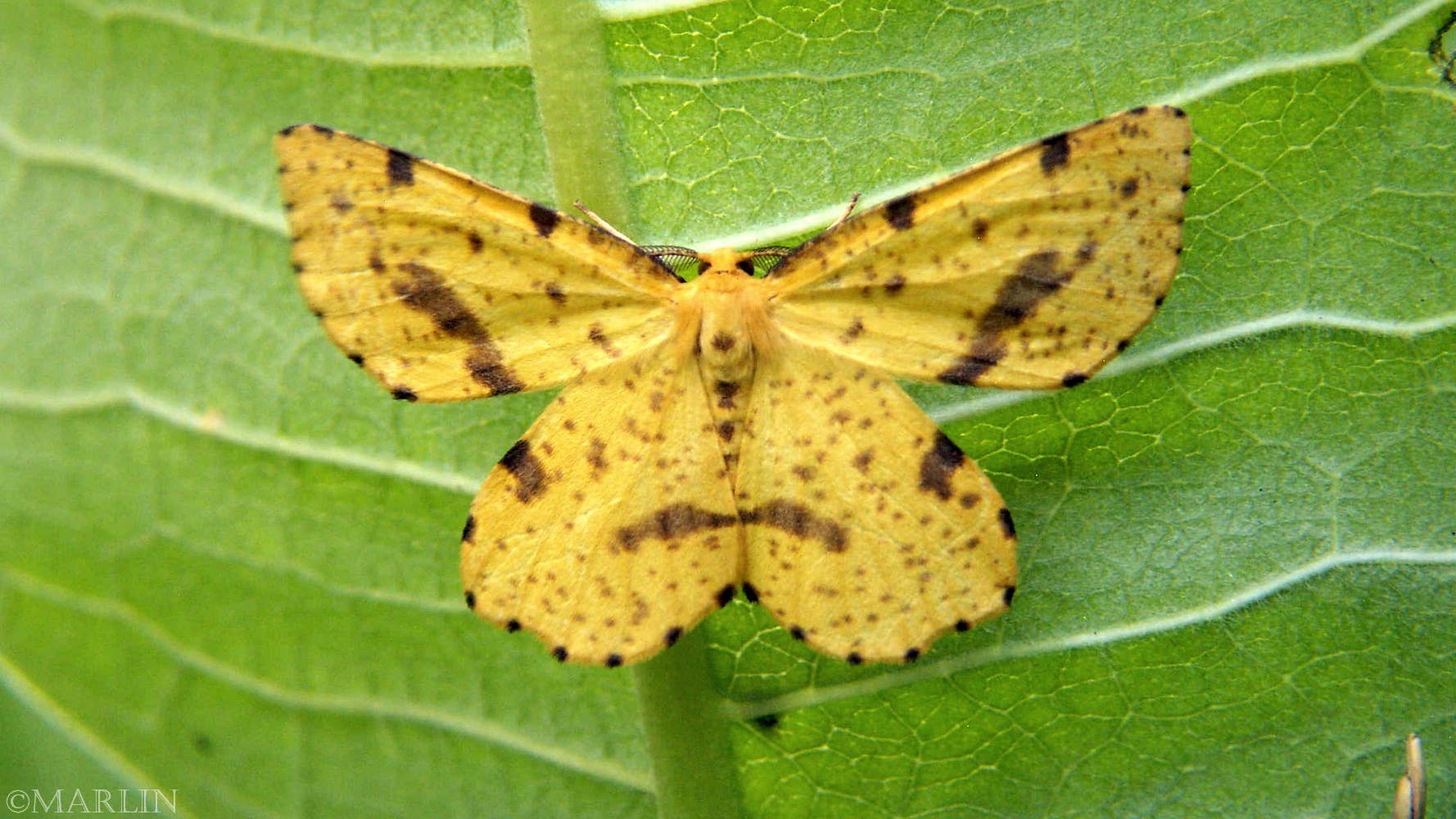False Crocus Geometer Moth – Xanthotype species
These lovely, pale yellow moths are fairly common amidst low vegetation in weedy fields and waste places in the American midwest.
The name “Geometridae” ultimately derives from geometer (“earth-measurer”). This refers to the locomotion of the larvae or caterpillars, which lack most of the prolegs of other Lepidopteran caterpillars (fig. 3). Equipped with appendages at both ends of the body, a caterpillar will clasp with its front legs and draw up the hind end, then clasp with the hind end (prolegs) and reach out for a new front attachment, creating a loop, and creating the impression that it is measuring its journey. The caterpillars are accordingly called loopers, spanworms, or inchworms. They tend to be green, grey, or brownish and rely on their superb camouflage to hide from predators.
 Erannis tiliaria, Linden Looper / Inchworm, about 10mm
Erannis tiliaria, Linden Looper / Inchworm, about 10mm

The geometer moths’ larvae are called inchworms, spanworms or loopers
Many Geometrids have slender abdomens and broad wings which are usually held flat with the hindwings visible. As such they appear rather butterfly-like but in most respects they are typical moths: the majority fly at night, they possess a frenulum to link the wings and the antennae of the males are often feathered. They tend to blend in to the background, often with intricate, wavy patterns on their wings. In some species, females have reduced wings (e.g. winter moth and fall cankerworm.
Order Lepidoptera: Moths. Unlike the butterflies, moths are usually nocturnal. Many moths and their caterpillars are major agricultural pests in large parts of the world. Moths in the family Tineidae are commonly regarded as pests because their larvae eat fabrics, clothes and blankets made from natural fibers such as wool or silk. Moths in the genus Farinalis feed on stored grain, flour, corn meal and other milled grain products.
Butterflies Main | Moths | Moths Index | Butterflies Index

